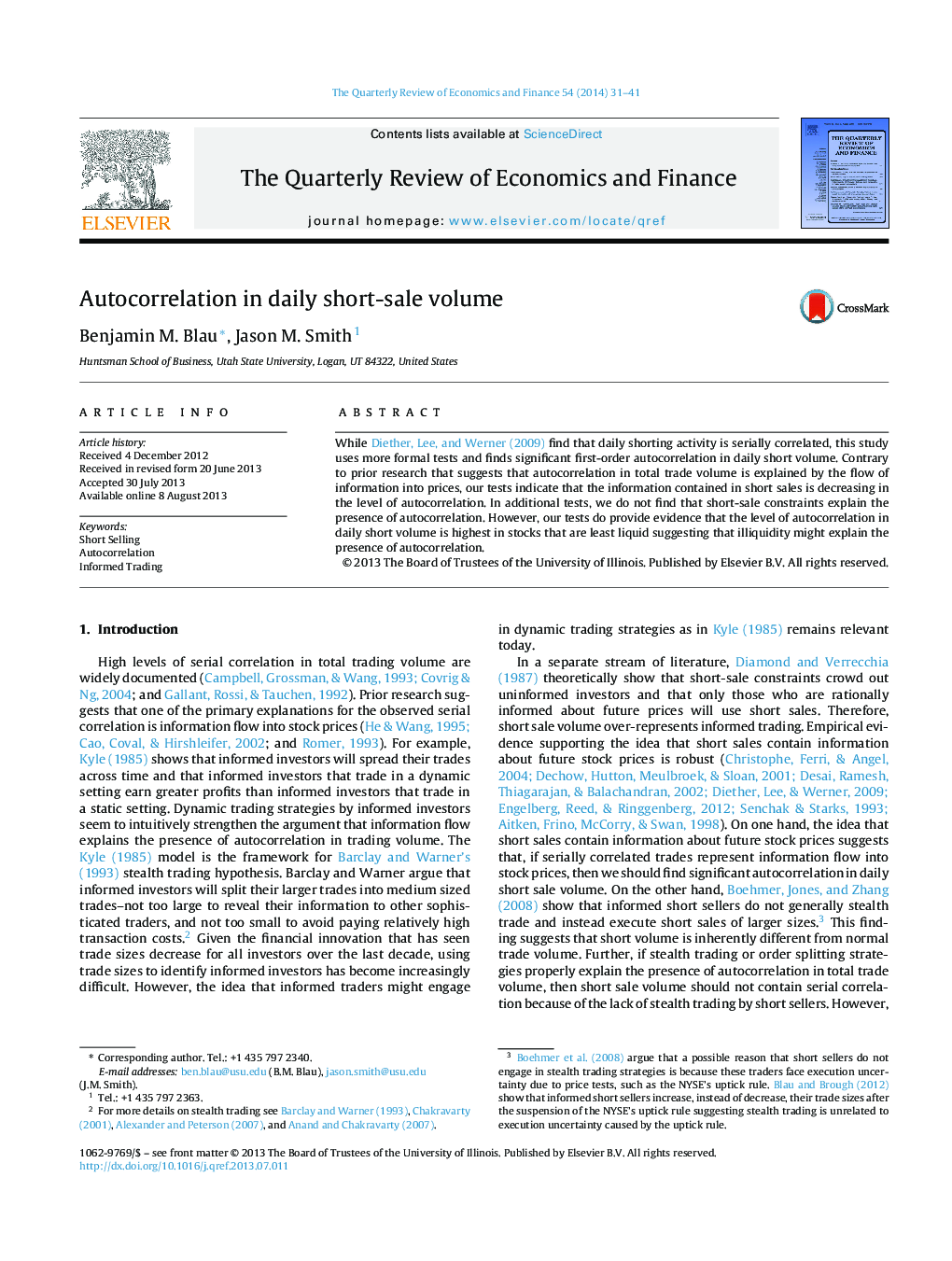| Article ID | Journal | Published Year | Pages | File Type |
|---|---|---|---|---|
| 983261 | The Quarterly Review of Economics and Finance | 2014 | 11 Pages |
•We find significant autocorrelation in daily short sale volume.•The autocorrelation is not explained by short-sale constraints.•The autocorrelation is not explained by the flow of information into prices.•If anything, the autocorrelation is explained by the presence of illiquidity.
While Diether, Lee, and Werner (2009) find that daily shorting activity is serially correlated, this study uses more formal tests and finds significant first-order autocorrelation in daily short volume. Contrary to prior research that suggests that autocorrelation in total trade volume is explained by the flow of information into prices, our tests indicate that the information contained in short sales is decreasing in the level of autocorrelation. In additional tests, we do not find that short-sale constraints explain the presence of autocorrelation. However, our tests do provide evidence that the level of autocorrelation in daily short volume is highest in stocks that are least liquid suggesting that illiquidity might explain the presence of autocorrelation.
